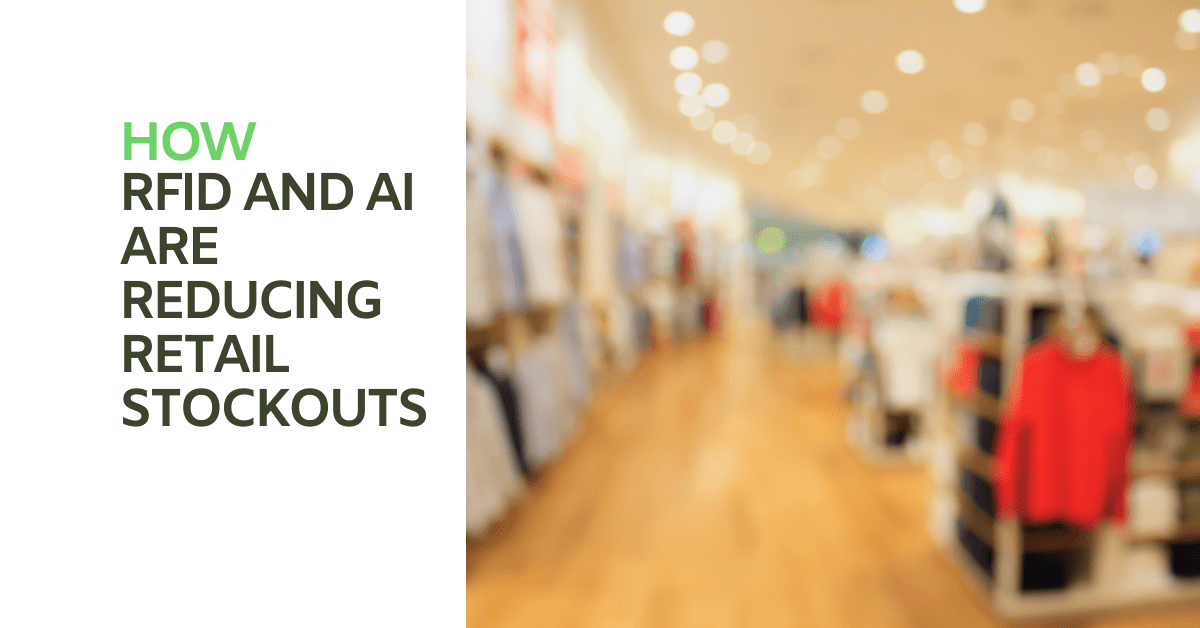


This post was originally published on LinkedIn by our gStore GM, Troy Siwek. Connect with or follow Troy here for more insightful content.
Retailers lose millions every year to stockouts, leaving frustrated customers with empty hands and lost loyalty. But what if you could cut stockouts by 30% or more using RFID and AI? These game-changing technologies are already helping stores keep shelves fuller and shoppers happier. The benefits go beyond just having the right product on hand; these tools are revolutionizing how inventory is managed in retail.
Earlier this week, a customer at a local store, sweet but visibly frustrated, approached an associate. “I was just at your other store, and they said you had it here. They even checked the app.” The associate sighed and replied, “I’ve had that happen a few times today.” This is the kind of experience that leads to lost sales. For every customer who asks for help, there are two or three more who simply walk out without saying a word. Those are missed opportunities—lost sales and, more importantly, potentially lost customers.
Backrooms in many stores are chaotic, making it hard for associates to quickly locate and restock items, especially during promotions when demand spikes. When this happens, sales are lost, and frustrated customers turn elsewhere. The disorganization behind the scenes not only affects sales but also damages brand loyalty, as customers expect stores to have the products they’re advertising as readily available.
The days of relying on manual processes and guesswork to manage inventory are fading fast. Overhead RFID technology, paired with smart replenishment systems, changes the game. RFID offers retailers a real-time, precise view of every item in the store, from the sales floor to the backroom. Unlike handheld readers, which depend on manual checks and can be inconsistent, overhead RFID systems deliver accurate, up-to-the-minute data, eliminating guesswork. Associates can pinpoint the exact location of any item and restock efficiently.
RFID is only part of the tech advancements transforming retail. Smart mirrors in changing rooms alert staff when customers try on items but don’t buy, or even are requesting a different size or color directly with the mirror, prompting managers to investigate possible issues with sizing or fit. Computer vision tracks foot traffic, showing where customers are spending the most time, and providing valuable insights into which products are drawing the most attention. When paired with real-time RFID replenishment, retailers can act quickly to adjust merchandising and address problems before they escalate.
RELATED READ: Retail Tech Nightmare?! Or Project Success?
With RFID-powered replenishment, inventory management shifts from reactive to proactive. These systems predict issues before they arise. Heat maps show where customers are congregating around displays but not purchasing. When that happens, the system alerts managers to investigate and make changes. Meanwhile, AI flags fast-moving items, prompting replenishment from the backroom before the shelves run dry, protecting sales and keeping momentum.
Moreover, stores are now tapping into new data sources, such as TikTok and Instagram, to track trends. When a product goes viral, stores can quickly adjust their displays to feature those trending items. This isn’t just about understanding how products are moving—it’s about knowing why they’re moving, and making quick adjustments, whether it’s for one store in London or a cluster of locations in New York City.
Nothing frustrates a customer more than finding empty shelves where their desired product should be. Leveraging RFID and intelligent replenishment drastically cuts down on stockouts, with some estimates suggesting a potential 3% boost in sales. Ensuring customers find what they’re looking for builds loyalty, as shoppers appreciate stores that consistently meet their needs.
This technology also empowers store associates by streamlining their tasks. With real-time inventory visibility, associates spend less time hunting for products and more time helping customers, improving both the shopping experience and employee satisfaction. A more engaged workforce leads to better customer service, which in turn drives more sales and loyalty.
RFID and AI are shifting how retailers handle inventory, but this is just the beginning. AI-powered analytics are helping store managers fine-tune their merchandising. Demand forecasting models predict which products will spike in popularity, allowing stores to replenish stock before a shortage occurs. Anomaly detection flags unusual sales patterns, helping to uncover theft or product defects. AI also suggests personalized recommendations for customers, driving more targeted sales.
Store layouts can even be optimized with the help of AI. By analyzing foot traffic, customer interactions with products, and even social media trends, AI can recommend the best placement for displays and products. Imagine a store that dynamically adapts its layout in real time based on customer behavior, ensuring maximum engagement and sales.
If you’re interested in how RFID and omnichannel strategies are transforming retail operations, check out this video from FutureStores, where Pareiya Gupta shares insights on stage with retailers discussing reducing stockouts and optimizing inventory flow.